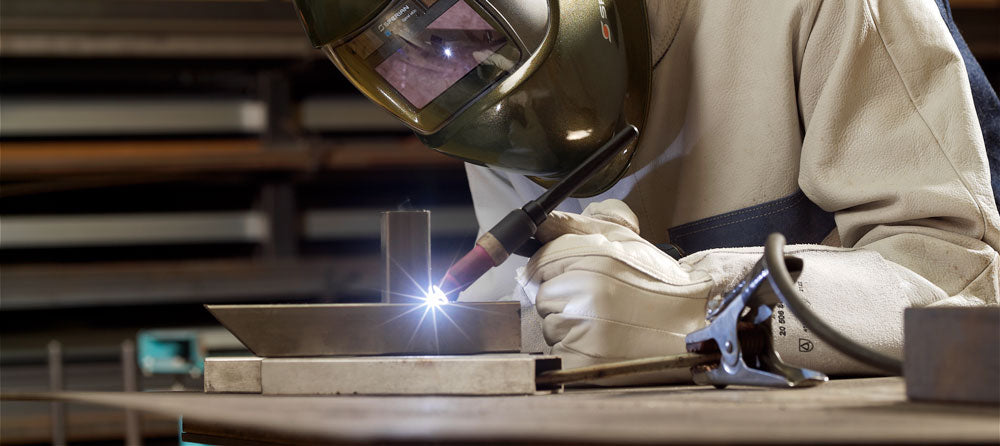Need Some Help? 0161 223 1843
Need Some Help? 0161 223 1843

November 28, 2019 3 min read
TIG welding, we have all seen the Hot rod shows on MTV and other channels from the USA showing them welding the panels with a TIG welder instead of a MIG. So I was wondering if it was possible to weld a modern aluminium vehicle with a TIG. Heres what I found out.
What Is TIG welding?
Tungsten Inert Welding is where the arc is provided using a tungsten electrode and the shielding gas is pore 100% Argon. This will melt the material and you then manually feed in your desired filler wire to create your weld bead.
TIG welding is very high-grade welding and is generally used in high-quality situations welding Stainless Steels, Titanium, aluminium, and Nickel Alloys.
The process of creating the arc alone enables the impurities in the material to be burnt away before the filler wire is inserted. This creates a cleaner higher grade fusion joint compared to MIG. Its downsides are that it is slower than MIG MAG Welding and requires a higher skill level from the welder.
Types of TIG welding

Sinewave Showing positive and negative.
There are 50 (Hz) of these waves per second in UK electricity supply and 60 ( Hz) in USA supplies.
DC - Direct current, used for ferrous materials and nickel alloys.
AC- Alternating Current, used for aluminium.
Welding
Unlike MIG MAG welding, the torch on a TIG welder is at a negative potential ( MIG is +) Electrons flow from negative to positive not the other way around and this creates the pinch point at the welding wire where it makes the wire blow.
TIG, on the other hand, current flows from the tungsten to the workpiece so the heat point is in the material. This is the easiest way to explain what happens.
DC Welding
When you arc up using a DC Tig welder you place your torch tungsten within a few millimetres of the workpiece and an HF current is initiated to jump the air gap. This enables the welding current to jump between the workpiece and your tungsten creating your arc. This HF only needs to initiate once at the start of the weld. The current flow is in DC mode so this enables it to self maintain.
There are two types of start for DC welding:
AC Welding
When welding aluminium we need both parts of the sinusoidal wave to generate the heat as aluminium disperses heat more easily than ferrous materials.
This would create a problem every time the wave drops to the negative side as it would mean the welding arc would distinguish. AC aluminium welding, therefore, has only one type of start:
This constant HF current can be very dangerous for electronics and other sensitive equipment.
The HF enables ionisation of the air gap between the tungsten and the workpiece enabling the weld current to bridge the gap without having to touch the tungsten. Its also used every time the AC wave goes negative to help in the re-establishment of the arc. This Constant HF creates an HF bubble around the workpiece therefore anything conductive can have an HF signal induced on it. This makes computers, telephones and sensitive electronics particularly vulnerable.
Therefore we would only recommend welding on older aluminium vehicles with a tig that has very basic electronic or electrical circuits it most certainly isn't possible on newer more electronic vehicles.
Thanks to Fronius For the Video
Comments will be approved before showing up.